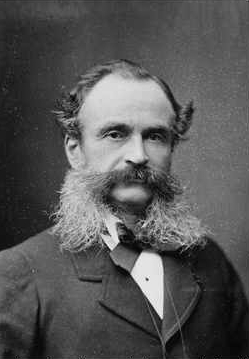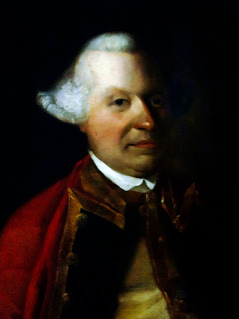External links
- Attribution
![]() This article incorporates text from a publication now in the public domain : Lee, Sidney, ed. (1892). "Jardine, Alexander". Dictionary of National Biography . Vol. 29. London: Smith, Elder & Co.
This article incorporates text from a publication now in the public domain : Lee, Sidney, ed. (1892). "Jardine, Alexander". Dictionary of National Biography . Vol. 29. London: Smith, Elder & Co.
Alexander Jardine (died 1799) was a Scottish artillery officer, spy, and writer on travel and politics.
He was an illegitimate son of Sir Alexander Jardine, 4th Baronet. [1] He entered the Royal Artillery as a private matross in March 1755, by Forbes Macbean. [2] He was transferred to the Royal Military Academy, Woolwich, as a cadet in June 1757. He passed out of the academy as a lieutenant-fireworker on 8 February 1758. [3]
Jardine saw service in several theatres of the Seven Years' War, including the Raid on Rochefort, the Invasion of Martinique (1759) and the Invasion of Guadeloupe (1759), and in 1762 was in Gibraltar for its defence. [4] His subsequent career was as second lieutenant on 11 September 1762, first lieutenant on 28 May 1766, and captain-lieutenant on 28 April 1773. [3]
For four years from 1776, Jardine acted as a British intelligence agent in Spain. [1] He was transferred to one of the Royal Artillery's invalid companies, on 1 November 1776. He became captain in 1777, brevet-major in 1783, and brevet lieutenant-colonel in 1793. [3] On his return to England around 1780 he endured financial hardship, and appealed to highly placed friends. In 1787 he was in Jersey, a guest of Henry Seymour Conway, the Governor. [5]
Jardine was sent in 1791 to Spain as consul in Galicia. He died in Portugal, on 8 April 1799. [1]
In 1772 Jardine returned from Gibraltar to Woolwich where he wrote to fellow officer Captain Edward Williams, proposing the formation of a Military Society at Woolwich, noting that "We have already in this country all kinds of Societies except a military one". [6] This voluntary organisation, though the exchange of essays and ideas between the members, would give "an acquaintance to a fixed degree, with Geometry, Algebra, Mechanics, Fortification, Natural Philosophy, History, Law and Politics..."; he proposed that members become familiar with the ideas of a broad cross-section of authors and thinkers:
| Ancients | Of the Moderns | ||
|---|---|---|---|
| Mathematical & Philosophy | Military | History, Politics, &c | |
| Euclid | Emerson | Puisegar | Robinson |
| Herodotus | M'Laurin [sic] | Folard | Hume |
| Thucydides | Newton | Saxe | Macauley |
| Xenophon | Robins | Monticueuli [sic] | Blackstone |
| Arian | Gravesand | Turenne | Locke |
| Vegetius | Desaguliers | Fouguier | Bolingbroke |
| Polybius | Coates [sic] | Lloyd | De Thou |
| Caesar | Ferguson | Coehorn | Davila |
| Livy | Nolet | Vauban | Sully |
| Sullust | Simpson | Trincano | P. Daniel |
| Belidor | Muller | Du Retz [sic] | |
| Mauduit | Du Pain | Montesquieu | |
| Du Lacq | Helvetius | ||
| A. Ferguson | |||
| Grotius | |||
His proposal was accepted, and supported by others. It came into existence that year, with a set of rules established, and a library to be formed. Although the Society only lasted until 1775, its success inspired, in 1839, the formation of an Institution that later became the Royal Military College of Science.
Jardine wrote:
Both works reflect the views of Jardine as a reformer, and friend of William Godwin, particularly on the equality of the sexes. [1] [9] Jardine relied on stadial theory in arguing for the equality of women. [10] His Letters was cited by Mary Hays, in her Appeal to the men of Great Britain in behalf of women (1798). [11]
The second work was with the publisher James Ridgway in 1792, but was not actually published. Antonio Borghese was a French composer. Dybikowski concludes, of Jardine's contribution to the Essay, that it was "an amalgam of Godwinian personal and social ideals structured by a Williams-like political organization". [12] [13]
Jardine supported military reforms, such as Conway had carried out in Jersey. His opinions were tinged with republicanism and accepting agonistic behaviour. In 1782 he reviewed in The Monthly Review military works by Michael Dorset and Henry Lloyd, and James Douglas's anonymous translation A General Essay on Military Tactics from Jacques Antoine Hippolyte, Comte de Guibert. He made criticisms of British military education. [14]
Politically, he identified as a Foxite critic of Lord North, an admirer of the theories on liberty of David Williams (philosopher), and his Letters were praised by Ralph Griffiths. He was personally acquainted with the reformer Francisco de Miranda. [15] By the 1790s he was a regular of William Godwin's circle, to which he introduced James Glenie, and was familiar with some of the radical authors of the period, including William Ogilvie of Pittensear. [16] He met Gaspar Melchor de Jovellanos in 1793, and they corresponded, but without finding much common ground. [17]
On gender issues, Jardine's Letters broached matters such as the positive effects of female influence, and female education. Mary Wollstonecraft in the Analytical Review found some value in the work. [18]
While stationed at Gibraltar Jardine collected military observations, and presented them in 1772 to the Regimental Society, Woolwich, which he helped to establish in 1772–5. The papers went to the Royal Artillery Institute. [3]
Jardine married a Spanish woman, Juana. They had a family of at least five children. [1] [4] Their daughter Charlotte married Robert Dallas. [19] Their daughters, Charlotte (1768–1792) and Joanna (c.1769–1830), are mentioned in The Early Journals and Letters of Fanny Burney, vol. v 1782 to 1783.
![]() This article incorporates text from a publication now in the public domain : Lee, Sidney, ed. (1892). "Jardine, Alexander". Dictionary of National Biography . Vol. 29. London: Smith, Elder & Co.
This article incorporates text from a publication now in the public domain : Lee, Sidney, ed. (1892). "Jardine, Alexander". Dictionary of National Biography . Vol. 29. London: Smith, Elder & Co.

The Royal Regiment of Artillery, commonly referred to as the Royal Artillery (RA) and colloquially known as "The Gunners", is one of two regiments that make up the artillery arm of the British Army. The Royal Regiment of Artillery comprises thirteen Regular Army regiments, the King's Troop Royal Horse Artillery and five Army Reserve regiments.

General Sir William Fenwick Williams, 1st Baronet was a Nova Scotian military leader for the British during the Victorian era.

The Royal Military College (RMC), founded in 1801 and established in 1802 at Great Marlow and High Wycombe in Buckinghamshire, England, but moved in October 1812 to Sandhurst, Berkshire, was a British Army military academy for training infantry and cavalry officers of the British and Indian Armies.

Lieutenant General Sir William Francis Drummond Jervois was a British military engineer and diplomat. After joining the British Army in 1839, he saw service, as a second captain, in South Africa. In 1858, as a major, he was appointed Secretary of a Royal Commission set up to examine the state and efficiency of British land-based fortifications against naval attack; and this led to further work in Canada and South Australia. From 1875 to 1888 he was, consecutively, Governor of the Straits Settlements, Governor of South Australia and Governor of New Zealand.

Thomas Bland Strange, known as 'Gunner Jingo', was a British officer noted for his service with the Canadian Militia during the North-West Rebellion of 1885. As a Royal Artillery officer posted to Canada, Strange was instrumental in establishing the country’s fledgeling artillery regiments following Canadian Confederation and has been referred to as the ‘Father of Canadian Artillery’.

General Sir John Miller Adye was a British soldier and amateur artist.

Major General Sir Alexander Dickson was a British Army officer who served in the artillery. He fought at many battles during the Napoleonic Wars. Arthur Wellesley, 1st Duke of Wellington had the highest opinion of his abilities and made him the effective commander of his army's artillery during the latter part of the Peninsular War.
Colonel Henry William Lowry-Corry DL, JP, styled The Honourable from birth, was a British Army officer and Conservative politician.

The East India Company Military Seminary was a British military academy at Addiscombe, Surrey, in what is now the London Borough of Croydon. It opened in 1809 and closed in 1861. Its purpose was to train young officers to serve in the East India Company's own army in India.
Stephen Payne Adye was an English brevet-major of the Royal Artillery.
General Sir Anthony Farrington, 1st Baronet DCL was a British Army officer of the Royal Artillery. He served in Gibraltar and in the American War of Independence.

General Sir William Green, 1st Baronet, of Marass, Kent was an officer in the British Army.
Lieutenant-Colonel Joseph Brome was a British Royal Artillery officer who served during the Napoleonic Wars.
Major General Lancelot Daryl Hickes was a senior British Army officer during the Second World War.
Major General Percy Drummond C.B. was a British Royal Artillery officer during the Napoleonic Wars

Lieutenant-General Robert Lawson was a British Army officer who served in the Royal Artillery during the American War of Independence and the Egyptian Campaign.
Lieutenant-General Forbes Macbean was a British Army officer of the Royal Artillery.
Lieutenant-Colonel Ninian Imrie of Denmuir was a Scottish army officer and geologist. He gave the first wholly geological description of the Rock of Gibraltar. He stirred the Plutonist versus Neptunist debate during the Scottish Enlightenment.
Révolutionnaire was a xebec that the French Navy commissioned in October 1793 and renamed Téméraire in 1794. HMS Dido captured her in the Mediterranean in 1795. She served for some time as HMS Temeraire until the Royal Navy changed her name to HMS Transfer. She was sold in 1803.

Sir George Charles Hoste was a British Army officer who fought in various battles and engagements of the Napoleonic Wars in Italy, Egypt, Belgium, and France between 1805 and 1815. The third son of a clergyman in Norfolk, he was educated at the Royal Military Academy, Woolwich, and was commissioned as second lieutenant in the Royal Engineers in 1802. He was promoted first lieutenant in the same year, captain in 1812, brevet-major in 1814, lieutenant-colonel in 1825, brevet-colonel in 1838, and colonel in 1841.